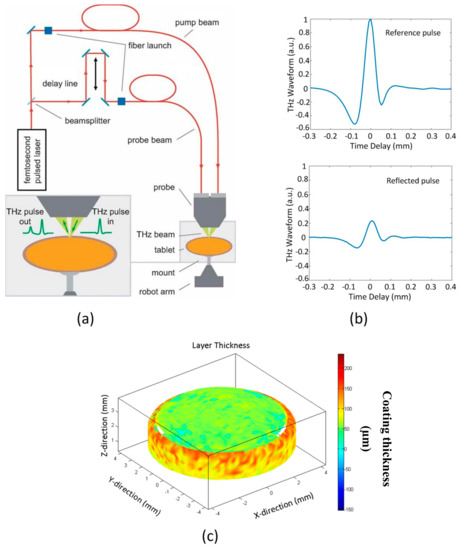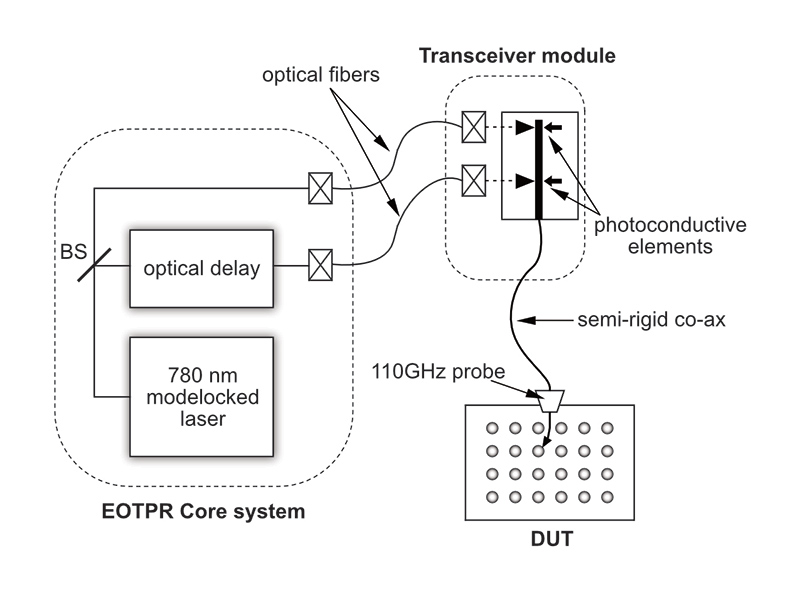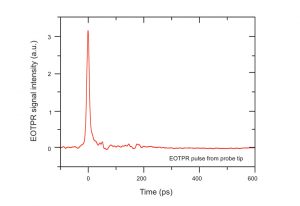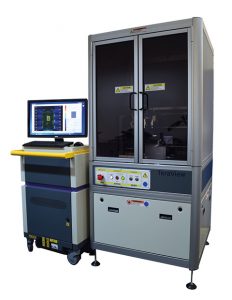Tuesday 30 June 2020
2020 OSA Awards and Medals
Monday 29 June 2020
Influence of SiO2 nanoparticles on morphology, optical, and conductivity properties of Poly (ethylene oxide)
Abstract
Friday 26 June 2020
Monitoring the role of enantiomers in the surface modification and adsorption process of polymers imprinted by chiral molecules: theory and practice
Thursday 25 June 2020
Simultaneous Investigation of the Liquid Transport and Swelling Performance during Tablet Disintegration

Fast disintegrating tablets have commonly been used for fast oral drug delivery to patients with swallowing difficulties. The different characteristics of the pore structure of such formulations influence the liquid transport through the tablet and hence affect the disintegration time and the release of the drug in the body. In this work, terahertz time-domain spectroscopy and terahertz pulsed imaging were used as promising analytical techniques to quantitatively analyse the impact of the structural properties on the liquid uptake and swelling rates upon contact with the dissolution medium. Both the impact of porosity and formulation were investigated for theophylline and paracetamol based tablets. The drug substances were either formulated with functionalised calcium carbonate (FCC) with porosities of 45% and 60% or with microcrystalline cellulose (MCC) with porosities of 10% and 25%. The terahertz results reveal that the rate of liquid uptake is clearly influenced by the porosity of the tablets with a faster liquid transport observed for tablets with higher porosity, indicating that the samples exhibit structural similarity in respect to pore connectivity and pore size distribution characteristics in respect to permeability. The swelling of the FCC based tablets is fully controlled by the amount of disintegrant, whereas the liquid uptake is driven by the FCC material and the interparticle pores created during compaction. The MCC based formulations are more complex as the MCC significantly contributes to the overall tablet swelling. An increase in swelling with increasing porosity is observed in these tablets, which indicates that such formulations are performance-limited by their ability to take up liquid. Investigating the effect of the microstructure characteristics on the liquid transport and swelling kinetics is of great importance for reaching the next level of understanding of the drug delivery, and, depending on the surface nature of the pore carrier function, in turn controlling the performance of the drug mainly in respect to dissolution in the body.
for full paper see https://www.sciencedirect.com/science/article/pii/S0378517320303641
"2.3. Terahertz Time-Domain Spectroscopy and Imaging. A commercial terahertz system (TeraPulse 4000, Teraview Ltd., Cambridge, UK) was used to conduct all the terahertz measurements in either transmission or reflection mode."
Wednesday 24 June 2020
Terahertz-infrared electrodynamics of swingle-crystalline Ba0. 2Pb0. 8Al1. 2Fe10. 8O19 M-type hexaferrite
Tuesday 23 June 2020
Sub-lattice of Jahn-Teller centers in hexaferrite crystal
They used a terahertz time-domain spectrometer (Teraview TPS 3000 TDS)
Monday 22 June 2020
Terahertz-Based Porosity Measurement of Pharmaceutical Tablets: a Tutorial
Friday 19 June 2020
Review of Terahertz Pulsed Imaging for Pharmaceutical Film Coating Analysis
 Terahertz pulsed imaging (TPI) was introduced approximately fifteen years ago and has attracted a lot of interest in the pharmaceutical industry as a fast, non-destructive modality for quantifying film coatings on pharmaceutical dosage forms. In this topical review, we look back at the use of TPI for analysing pharmaceutical film coatings, highlighting the main contributions made and outlining the key challenges ahead.
Terahertz pulsed imaging (TPI) was introduced approximately fifteen years ago and has attracted a lot of interest in the pharmaceutical industry as a fast, non-destructive modality for quantifying film coatings on pharmaceutical dosage forms. In this topical review, we look back at the use of TPI for analysing pharmaceutical film coatings, highlighting the main contributions made and outlining the key challenges ahead.Thursday 18 June 2020
Nondestructive measurement of mill-scale thickness on steel by terahertz time-of-flight tomography
for full paper see https://www.sciencedirect.com/science/article/abs/pii/S0257897220304345
ExperimentalThe THz experiments were carried out in an air -conditioned laboratory at 22 o C with humidity < 48 %. Otherwise, the samples were stored in a dry box to retard the transformation of wüstite from transforming into magnetite. The experiments shown here were conducted within the 3 months of sample fabrication to ensure that the scale films were primarily composed of wüstite. The THz reflection measurements are taken on a TeraView TPS Spectra 3000, a pulsed, broadband THz time -domain spectroscopy (TDS) system, shown in Fig. 4.
Wednesday 17 June 2020
Terahertz Imaging and Characterization Protocol for Freshly Excised Breast Cancer Tumor
Application of Terahertz Spectroscopy and Imaging in the Diagnosis of Prostate Cancer
Monday 15 June 2020
Laser process of transparent conducting surfaces for terahertz bandpass ultrathin metamaterials.
Friday 12 June 2020
Optical thickness of a plant leaf measured with THz pulse echoes
Thursday 11 June 2020
N-glycosylation state of TRPM8 protein revealed by terahertz spectroscopy and molecular modelling
Wednesday 10 June 2020
Advanced Packaging fault isolation case studies and advancement of Electro Optical Terahertz Pulse Reflectometry (EOTPR)


Tuesday 9 June 2020
Broadband amplitude, frequency, and polarization splitter for terahertz frequencies using parallel-plate waveguide technology.
Hernandez-Serrano, A. I., Daniel M. Mittleman, and Emma Pickwell-MacPherson. "Broadband amplitude, frequency, and polarization splitter for terahertz frequencies using parallel-plate waveguide technology." Optics Letters 45, no. 5 (2020): 1208-1211.
In this Letter, we report a broadband frequency/polarization
demultiplexer based on parallel-plate waveguides (PPWGs)
for terahertz (THz) frequencies. The fabrication and
experimental validation of this polarization sensitive
demultiplexer is demonstrated for the range from 0.2 to
1 THz. Upgrading the demultiplexer by adding a second
demultiplexer stage, a fifty-fifty amplitude splitter is also
demonstrated in the same frequency range. The multiplexer
is based on a stainless-steel traveling-wave antenna, exhibiting strong mechanical robustness. This unique device
exhibits three splitting mechanisms in the same device:
amplitude, polarization, and frequency splitting. This is
a significant improvement for the next generation of THz
passive components for communication purposes.
"To characterize the proposed demultiplexer, we use the
Terapulse 4000 THz-TDS spectrometer from TeraView Ltd.
with a spectral resolution of 4.5 GHz in the configuration shown
in Fig. 2. This setup allows for the angle variation between the
exit face of the demultiplexer and the receiver. An aperture size
of 2.5 mm is placed in front of the receiver in order to improve
the spatial resolution. In this Letter, we study two demultiplexers with two different values of the plate spacing in order to
highlight the tunability of the device. In Fig. 3, the experimental
results for the two demultiplexers are presented for both TE1
and TEM modes. "
Monday 8 June 2020
Guided terahertz pulse reflectometry with double photoconductive antenna
Abstract
Friday 5 June 2020
A Nondestructive Eggshell Thickness Measurement Technique Using Terahertz Waves
Abstract
 Eggshells play a number of important roles in the avian and reptile kingdom: protection of internal contents and as a major source of minerals for developing embryos. However, when researching these respective roles, eggshell thickness measurement remains a bottleneck due to the lack of a non-destructive measurement techniques. As a result, many avian and reptile research protocols omit consideration of eggshell thickness bias on egg or embryo growth and development. Here, we validate a non-destructive method to estimate eggshell thickness based on terahertz (THz) reflectance spectroscopy using chicken white coloured eggs. Since terahertz waves are reflected from outer air-eggshell interface, as well as the inner eggshell-membrane boundary, the resulting interference signals depend on eggshell thickness. Thus, it is possible to estimate shell thickness from the oscillation distance in frequency-domain. A linear regression-based prediction model for non-destructive eggshell thickness measurement was developed, which had a coefficient of determination (R2) of 0.93, RMSEP of 0.009, RPD of 3.45 and RER 13.67. This model can estimate eggshell thickness to a resolution of less than 10 μm. This method has the potential to expand the protocols in the field of avian and reptile research, as well as be applied to industrial grading of eggs.
Eggshells play a number of important roles in the avian and reptile kingdom: protection of internal contents and as a major source of minerals for developing embryos. However, when researching these respective roles, eggshell thickness measurement remains a bottleneck due to the lack of a non-destructive measurement techniques. As a result, many avian and reptile research protocols omit consideration of eggshell thickness bias on egg or embryo growth and development. Here, we validate a non-destructive method to estimate eggshell thickness based on terahertz (THz) reflectance spectroscopy using chicken white coloured eggs. Since terahertz waves are reflected from outer air-eggshell interface, as well as the inner eggshell-membrane boundary, the resulting interference signals depend on eggshell thickness. Thus, it is possible to estimate shell thickness from the oscillation distance in frequency-domain. A linear regression-based prediction model for non-destructive eggshell thickness measurement was developed, which had a coefficient of determination (R2) of 0.93, RMSEP of 0.009, RPD of 3.45 and RER 13.67. This model can estimate eggshell thickness to a resolution of less than 10 μm. This method has the potential to expand the protocols in the field of avian and reptile research, as well as be applied to industrial grading of eggs.Thursday 4 June 2020
Contactless Terahertz Paint Thickness Measurements: specificity of aeronautics industry
Wednesday 3 June 2020
Low‐loss frequency selective surface for multi‐band THz transmission measurement
Yang, Xiaofan, Yonghu Zeng, Xiaoming Liu, Jun Zhou, Lu Gan, Hao Chen, and Junsheng Yu. "Low‐loss frequency selective surface for multi‐band THz transmission measurement." Microwave and Optical Technology Letters.
Abstract
Tuesday 2 June 2020
Application of a Terahertz System Combined with an X-Shaped Metamaterial Microfluidic Cartridge
Monday 1 June 2020
EOTPR Electro Optical Terahertz Pulse Reflectometry: The world’s fastest and most accurate fault isolation system.
- Pre-scan station to map contact location and height.
- Data acquisition time of less than 5 seconds per pin.
- Software that will drive the automated probe station and pre-scan station.
- Availability of both manual mode and automated mode for probing.
- User interface software to manage data display and recipe creation.
- Probe tip placement.


